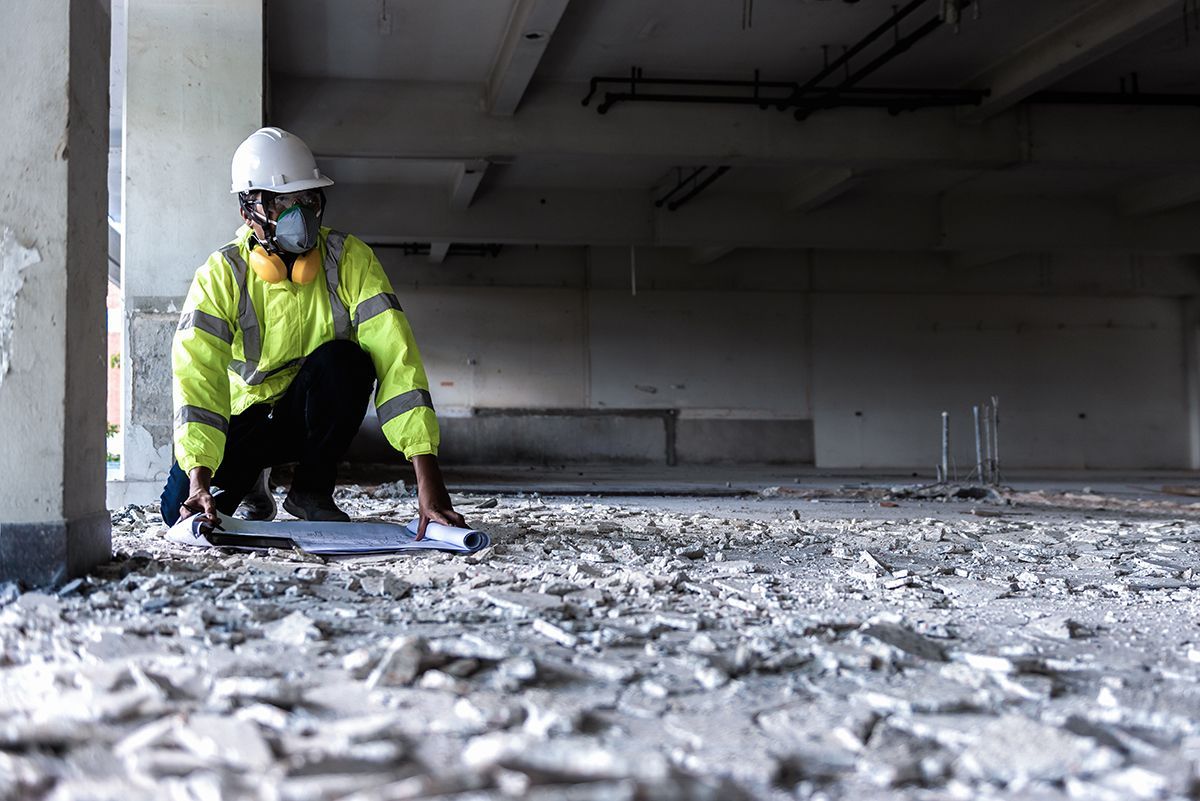Asbestos Awareness: Who is at Risk of Exposure

Asbestos is a hazardous material that was widely used in construction and manufacturing from the 1970s to the 1990s due to its resistance to heat and durability. Despite its beneficial properties, asbestos exposure poses significant health risks, including serious lung diseases like asbestosis and cancer.
At Cordtape Environmental, we are committed to providing the knowledge, tools, and services necessary to ensure safe environments for all, and understanding exactly who is at risk is the first step towards managing these risks.
Industries where asbestos exposure is highest
While asbestos was commonly used in home construction during the latter half of the 20th century, the risk of exposure today is primarily concentrated among workers in certain industries. Individuals in these fields are more likely to disturb asbestos containing materials (ACMs) as part of their daily duties, which increases their risk of exposure.
Some of the industries with the highest potential for asbestos exposure include:
Plumbing: Plumbers often encounter asbestos when working with older pipe systems, insulation, and gaskets that may contain the material. Cutting, drilling, or removing these components can release asbestos fibres into the air.
Construction: Construction workers, especially those involved in renovation or demolition projects, frequently come across ACMs in older buildings. These materials can be found in insulation, cement, roofing, and more, posing a significant risk if disturbed without proper precautions.
Heating Engineers: Those who work with heating systems, particularly in older buildings, are at risk of asbestos exposure. Insulation around boilers, pipes, and ducts in older heating systems may contain asbestos, which can become airborne if disturbed.
Demolition: Demolition workers face one of the highest risks of asbestos exposure. The process of tearing down buildings can release large amounts of asbestos fibres if proper safety measures are not followed.
Electricians: Electricians may encounter asbestos when working in older buildings, particularly when accessing wiring and electrical systems that may be surrounded by asbestos insulation or located near other ACMs.

Who is most at risk of asbestos exposure
Construction and demolition workers
Construction workers, particularly those involved in renovation or demolition, are at risk of asbestos exposure due to the nature of their work. The disturbance of asbestos containing materials (ACMs) is a risk when the initial building materials used to create the structure contained the asbestos. This includes roof felt, roof tiles, insulation and cement.
Workers in these fields may encounter asbestos when:
Renovating or demolishing older buildings
Cutting, drilling, or sanding materials that contain asbestos
Handling debris from demolition sites without proper protective equipment
Home renovation professionals
As with construction workers, those involved in home renovation who are working on homes built before 1999 could be at risk of asbestos exposure.
It is important to understand that asbestos assessments can and should be conducted prior to a home renovation, and that the short term nature of asbestos exposure in these conditions means it is unlikely to have a long-term impact on the health of individuals involved, however vigilance is key to ensuring complications are avoided altogether.
Firefighters and first responders
Firefighters and first responders face unique risks when entering burning buildings or responding to natural disasters. In such chaotic environments, asbestos containing materials (ACMs) can be easily damaged and become airborne, exposing them to significant risks to their health.
With the correct PPE in place, these risks can be minimised.
Asbestos surveyors
Anyone who is employed to conduct asbestos surveys and asbestos removal are at risk of exposure.
Are members of the public at risk of asbestos exposure?
For the general public, the risk of asbestos exposure is relatively low, especially if they do not live or work in environments where ACMs are disturbed.
However, there are scenarios where the public could be exposed, such as during renovations in older buildings or if living in a home with deteriorating asbestos materials. In such cases, it’s essential to conduct professional asbestos testing and removal to prevent exposure.
If you suspect that there may be asbestos in your home or place of work, you must seek the services of qualified
Asbestos Surveyors.
Symptoms of asbestos exposure
Asbestos-related diseases often take many years, even decades, to develop, which means symptoms may not appear until long after exposure.
Common symptoms of asbestos exposure include:
- Shortness of breath
- Persistent cough
- Chest pain
- Fatigue
- Weight loss
If you experience these symptoms and have a history of asbestos exposure, it is crucial to seek medical advice promptly.
Handling an asbestos risk on commercial premises is a critical responsibility that should never be taken lightly. By conducting thorough surveys, creating an effective management plan, and prioritising the safety of occupants and employees, you can mitigate the risks associated with asbestos exposure.
Contact
Cordtape Environmental for professional
Asbestos Survey and
Asbestos Removal services as well as expert
Asbestos Waste Management.




